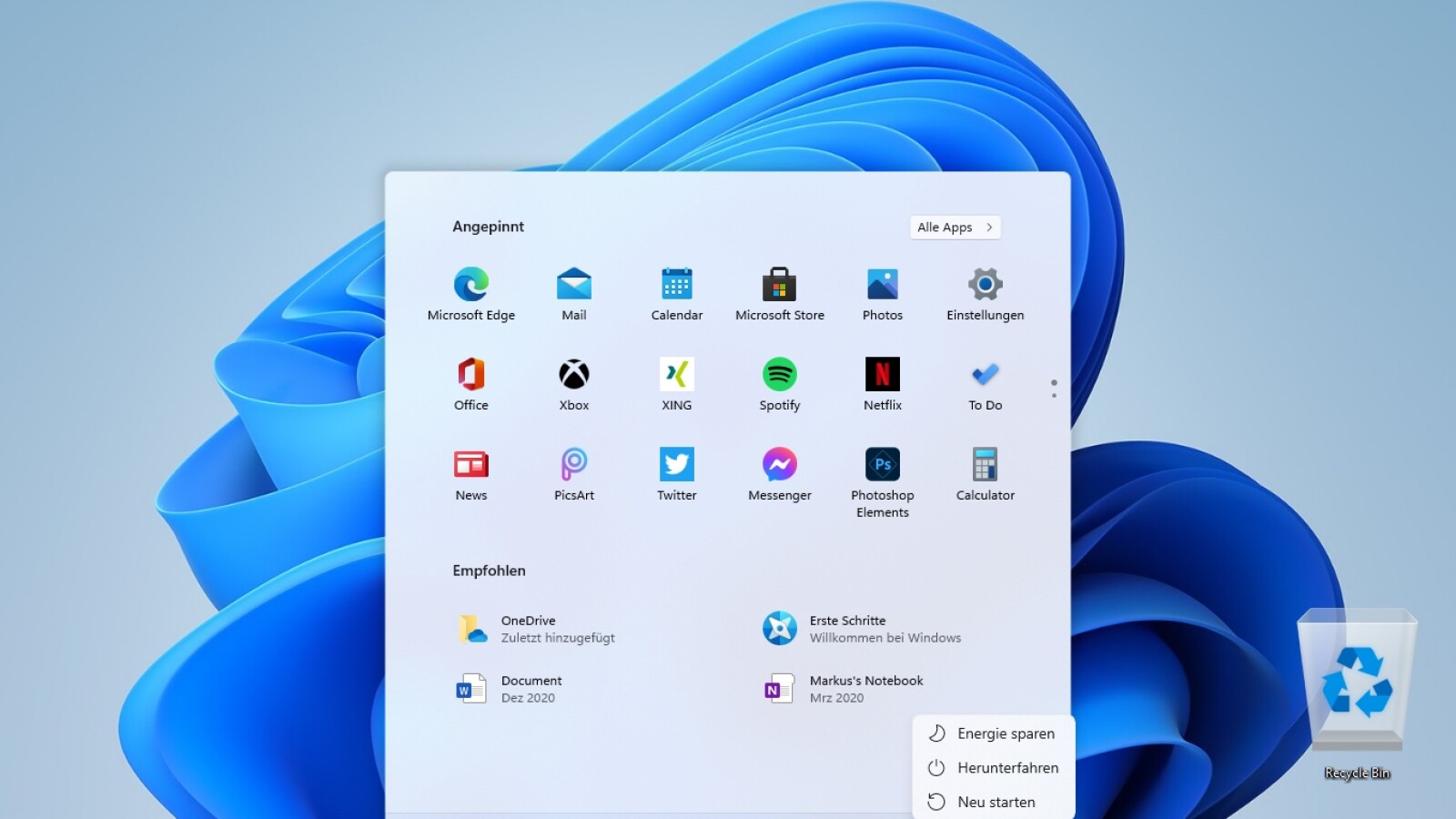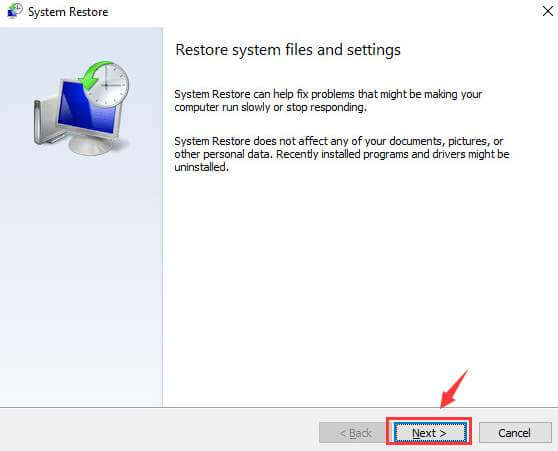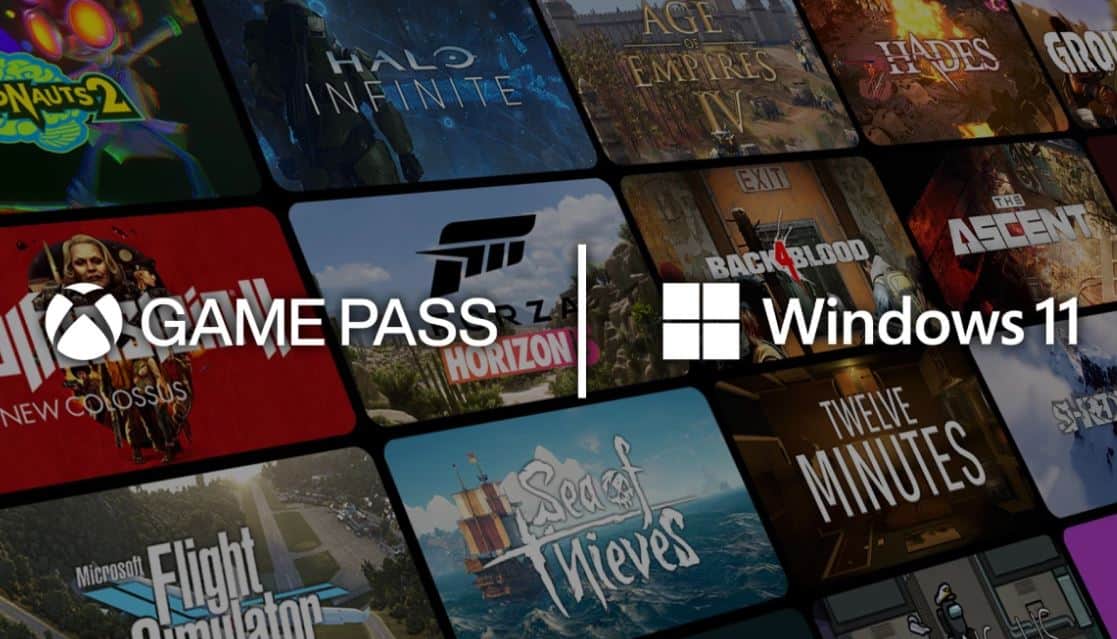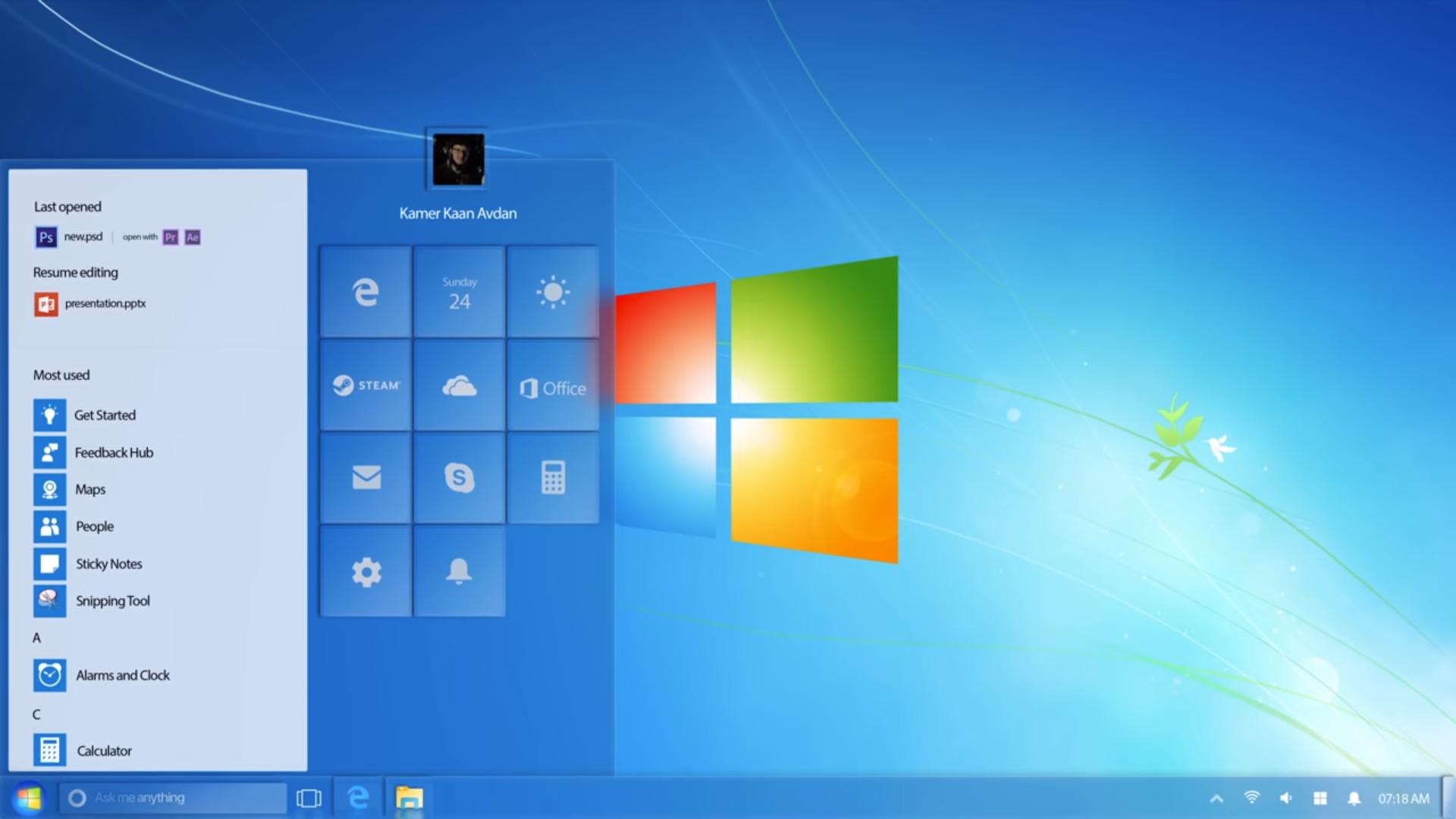Cunningham concluded that "as I've dug into and learned its ins and outs for this review, I've warmed to it more", but argued that the OS was facing similar "public perception" issues to Windows Vista and Windows 8. Windows 11 is finally out for the general users and has brought along a number of new features. You can easily customize the Start menu, or edit the Taskbar's look. The performance department has also seen some improvements as Microsoft has improved memory management, disk usage, app prioritization, and several other factors related to CPU and battery performance. But, not all's well if you have an old laptop running the new Windows version.
In this article, just like we detailed how to speed up Windows 10, we bring to you another tutorial on how to speed up Windows 11 and improve the performance significantly. Warren noted that he rarely used the Widgets panel or Microsoft Teams, citing that he preferred the weather display that later versions of Windows 10 offered, and didn't use Teams to communicate with his friends and family. He also acknowledged the expansion of Microsoft Store to include more "traditional" desktop applications.
Overall, he concluded that "I wouldn't rush out to upgrade to Windows 11, but I also wouldn't avoid it. After all, Windows 11 still feels familiar and underneath all the UI changes, it's the same Windows we've had for decades." Windows 11 includes several new features, such as improved snapping, Dynamic Refresh Rate, and Direct Storage, but the biggest change the operating system brings could be something that people never see. A recent Microsoft Mechanics video breaks down the performance improvements included in Windows 11. Compared to devices running Windows 10 on the same hardware, PCs running Windows 11 should have better app performance, improved battery life, and quicker resume from sleep times. Citing security considerations, the system requirements for Windows 11 were increased over Windows 10.
While the OS can be installed on unsupported processors, Microsoft does not guarantee the availability of updates. Windows 11 also drops support for 32-bit x86 CPUs and devices which use BIOS firmware. Internet Explorer has been replaced by the Chromium-based Microsoft Edge as the default web browser, and Microsoft Teams is integrated into the Windows shell. Microsoft also announced plans to allow more flexibility in software that can be distributed via Microsoft Store, and to support Android apps on Windows 11 . As part of the minimum system requirements, Windows 11 only runs on devices with a Trusted Platform Module 2.0 security coprocessor. According to Microsoft, the TPM 2.0 coprocessor is a "critical building block" for protection against firmware and hardware attacks.
In addition, Microsoft now requires devices with Windows 11 to include virtualization-based security , hypervisor-protected code integrity , and Secure Boot built-in and enabled by default. The operating system also features hardware-enforced stack protection for supported Intel and AMD processors for protection against zero-day exploits. In October 2019, Microsoft announced "Windows 10X", a future edition of Windows 10 designed exclusively for dual-touchscreen devices such as the then-upcoming Surface Neo.
Legacy Windows applications would also be required to run in "containers" to ensure performance and power optimization. Microsoft stated that it planned to release Windows 10X devices by the end of 2020. A redesigned user interface is present frequently throughout the operating system, building upon Fluent Design System; translucency, shadows, a new color palette, and rounded geometry are prevalent throughout the UI. A prevalent aspect of the design is an appearance known as "Mica", described as an "opaque, dynamic material that incorporates theme and desktop wallpaper to paint the background of long-lived windows such as apps and settings".
If you'd like to test out the bleeding edge version of Ubuntu set to be released next year, check it out. It will feature Gnome 42, which takes some hints from Elementary OS. There's a system-wide dark style preference and day and night scheduling options. There are new power profiles available to help save battery on laptops. It has a new multitasking panel with hot corners to help you navigate your desktop in a fast, productive manner. Original equipment manufacturers can still ship computers without a TPM 2.0 coprocessor upon Microsoft's approval.
Some third-party software may refuse to run on unsupported configurations of Windows 11. At least 16GB of RAM The basic system requirements of Windows 11 differ significantly from Windows 10. Windows 11 only supports 64-bit systems such as those using an x86-64 or ARM64 processor; IA-32 processors are no longer supported. Thus, Windows 11 is the first ever consumer version of Windows not to support 32-bit processors and 16-bit software . The minimum RAM and storage requirements were also increased; Windows 11 now requires at least 4GB of RAM and 64GB of storage.
The compatibility list includes the Intel Core i7-7820HQ, a seventh-generation processor used by the Surface Studio 2, although only on devices that shipped with DCH-based drivers. As familiar as Windows 11 might be, there's still a lot that's changed. The programs you know are all still available and supported, but they'll be joined by Android apps, running as windowed programs on the desktop (though not right away — Microsoft's still fine-tuning that feature).
Your favorite multitasking functions get upgraded with new Snap Layouts, and virtual desktops are getting better with more flexibility and features. Thankfully, the migration to Windows 11 will be significantly shorter. Not only are organizations now getting used to managing their IT in an Evergreen IT way, but a lot has happened with regards to desktop management toolset maturity. While before we often had to fly blind , we now have a lot of crucial data sets available to us like usage-based information on apps, hardware inventory, and much more. Tools like ServiceNow have become the authoritative source for device warranty dates and CMDB whilst MECM has improved immeasurably with additional data and feed support such as Desktop Analytics. Application packaging and testing are also being automated and integrated as an ongoing routine in migration management rather than the dedicated teams of prior migrations.
This doesn't happen in Windows 10, and it's been a problem since I first installed the preview. I've also just recently started having issues with my LG UltraFine 5K as well. It'll go black for a few seconds every minute or two, though Windows doesn't seem to register that it's dropped off. I get that it's a Thunderbolt display mostly made for Macs, but these issues haven't cropped up in Windows 10.
Until they're gone from my test install, I'd really rather not upgrade to Windows 11 on my main partition. Other than those issues, though, it's been like using a prettier version of Windows 10. With security issues becoming commonplace it's good that Microsoft are focusing heavily on security. Updates will now run more frequently and in the background while you work without slowing you down. This should avoid those annoying "Microsoft is installing updates" delays when turning your computer on every now and then. If you're on Systemagic's support and maintenance plan then this won't make a difference but is handy for those who have devices that aren't switched on regularly.
Technical requirements like UEFI bios settings and TPM chips (which you can leave to Systemagic to figure out – that's what we're here for!) are great to see too. Windows 11 SE was announced on November 9, 2021, as an edition exclusively for low-end devices sold in the education market, and a successor to Windows 10 S. It is bundled with applications such as Microsoft Office for Microsoft 365, Minecraft Education Edition, and Flipgrid, while OneDrive is used to save files by default.
Windows 11 SE does not include Microsoft Store; third-party software is provisioned or installed by administrators. With many Windows 10 users unsure about whether they should shift due to speed and compatibility issues they may face, Microsoft rushed out a senior exec to explain whether Windows 11 speed will be up to scratch. After all, why would a Windows 10 user want to upgrade if Windows 11 speed is not equal, or greater? Now, Microsoft has finally explained exactly why and how Windows 11 speed will be faster than the Windows 10 operating system.
In the video, Steve Dispensa, VP of Enterprise Management at Microsoft talks about the key factors that make Windows 11 better than Windows. He also talks about the rationale behind Windows 11 system requirements. The millions of Windows users who don't use Teams can remove the icon, but they'll need to do so from Settings — there is no simple right-click, unpin option for pre-installed apps.
Those who do use the video conferencing software can launch video calls, host chats, or bring up the full Teams app. I'm sure some will find this convenient, but most Windows 11 users will wonder why something they'll never touch is featured so prominently on the desktop. For the past six years, Windows users have watched on the sidelines as the tech landscape changed at a breakneck pace. When Microsoft's sporadic "feature updates" did arrive, they were often plagued with bugs, some so damaging the updates were suspended. And yet, despite its rocky path, Windows 10 will go down as a success, a stopgap to the mess its predecessors left behind. It brought back the traditional desktop interface, gave PC owners reliable performance, and popularized touchscreen displays and hybrid 2-in-1 laptops.
Also, it is very rare to see such improvement in performance with just Windows OS update while using the same hardware. And I am pretty impressed that Microsoft invested 6 years for Windows 11 and they have done a great job. Not only in terms of Windows performance, gaming experience but also they have added more lot features which are badly needed for Windows users. One thing which I really like is the Start Menu which has given a much more appealing look to the Windows desktop. Windows 11 gives more performance when browsing the Internet thanks to Microsoft Edge, which replaced Internet Explorer last year. Updates will be 40% smaller and less frequent, and the operating system improves battery life for laptops and tablets.
We've seen loads of users switch to working from Surface tablets or laptops now that work is more flexible so it's great that Windows 11 will make those devices run faster and last longer. The question many users ask first is whether they can upgrade, or rather downgrade, to Windows 10 if the machine is running Windows 11. As noted in a recent thread on Askwoody.com, a Windows 11 license is a digital one that allows an install of Windows 10 on a machine running 11. But, as a Lenovo support note points out, a clean install of Windows 10 may require that you download needed drivers. Whenever I install Windows 10 cleanly on a computer, there are invariably one or two devices in the device manager that show up with a "! If you're lucky, as the machine gets online and checks in online, the drivers will trickle down in the background and get installed.
If you're not lucky, you have to search for them on vendor websites. Do not download drivers from a random driver site, as more often than not they will include malware. One of the biggest changes coming announced for Windows 11 this summer was the addition of Android app support. With Windows 11, Android would be able to run on the desktop, in a separate window that you could use with Snap Layouts and as well as with touch, keyboard and mouse – every way you interact with Windows.
And you would be able add apps to the taskbar and start menu, just like other programs, to make them part of your workflow from day-to-day. The new graphics, the redesigned Start menu, the activity center, the rounded windows, the new icons, the new system applications will be the first features that users will notice when theyupgrade to Windows 11. However, an operating system for the general market such as Windows 11 also needs many changes "under the hood" that are much less evident than those related to the interface and user experience. Windows 11 is here, though it remains an optional upgrade for anyone on existing desktops and laptops that are eligible for it. New PCs will increasingly begin shipping with Windows 11 pre-installed, so adoption rates will gradually rise in 2022 and beyond. If you're tempted to try Windows 11 on a supported PC you own, or will purchase a new machine with Microsoft's latest OS soon, you may be wondering if and how it will affect performance with the apps you use every day.
Its test just doesn't seem to demonstrate the actual improvement of Windows 11 very effectively. If the Windows 11 system is allocating resources more effectively than its Windows 10 counterpart, we should see that reflected in faster screen updates and smoother UI transitions. The operating system is the heart of your laptop, managing all your software and hardware, including files, memory and connected devices.
Now Windows 11 is bringing PC users all the power and security of Windows 10 but with a completely redesigned look for an even better experience. This time around, managing an entire platform change is, by far, not such an undertaking anymore as we now have technologies and automation in place that help us prioritize who goes where and when using a data-driven approach. If the Microsoft Surface family of products isn't your style though, other brands like Dell, Asus and HP have all released pages online that specify what devices are Windows 11 ready. Note that many won't come with the new operating system installed, but as they all meet the minimum system requirements, you can simply buy the laptop or 2-in-1 as normal and then update it yourself. In January 2021, it was reported that a job listing referring to a "sweeping visual rejuvenation of Windows" had been posted by Microsoft. A visual refresh for Windows, developed under the codename "Sun Valley", was reportedly set to re-design the system's user interface.
Increasing the RAM of a computer can help improve its performance and make it faster. You can also consider switching to an SSD if you are using a PC with a hard drive. Believe me, the difference in performance is simply day and night. I have been using an SSD on a 3rd-gen Intel i3 processor and Windows 11 runs flawlessly. A typical 5400 RPM hard drive has a read/write speed of 100MBps whereas a SATA SSD offers a read/write speed of 500MBps. It's a massive jump of 5x and you will experience the change in boot time, app opening, and overall interaction with OS elements.
You should probably check that your drivers are updated to the recent.... As mention by Jvickers about the start up you should have that check too. I've found out some users have face problem of running only in 1 core instead of the given number after the installation of W11.. I've been using it on my main system since the day of the release and its more lighter than the other previous windows.. Microsoft has lately released the much-awaited Windows 11, which is the successor to Windows 10.
However, its Windows Insider program is now available for developers. Though Windows 11 brings a whole new design haul along with some improved features, some users are experiencingwindows 11 slow performanceafter installing it. Windows 11 is officially out, meaning millions of PC owners are free to upgrade today (as long as their computers meet Microsoft's ridiculously strict system requirements). I've been testing a near-final pre-release version of Windows 11 for a while, and I'm here to spread the good news that my computer hasn't blown up once. Windows 11 is so far a completely non-lethal operating system, which is definitely a good sign, but maybe not enough justification to install it. To make the call on whether other PC gamers should actually install Windows 11 today, I've been spending some quality time with its new Start menu and rounded corners.
The last of the performance improvements cover disk footprints and browser caches. In Windows 11, Microsoft expanded the use of compression technologies. In non-critical apps like Sticky Notes, the default rate of the app will be a "stub." What this means is that while the app loads up, binaries from the system get pulled on-demand without comprising the functionality of the app. This can help reduce the size of an app on the disk and push less background update activity and download traffic.
As for the browser cache, Microsoft says that it now uses less disk space. One of the changes made under the hood is what Microsoft calls foreground prioritization where memory now favors the app windows you have running in the foreground, giving them CPU and system resource priority. The goal is to prevent the apps and programs you're actually using from ever slowing down. We'll need to do more testing to see how well this really works. Windows Widgets are back in Windows 11, accessible via the dock, with Microsoft touting AI-powered dynamic features that enable widgets, as with the Start menu, to change depending on the apps you're using and the time of day. On the touchscreen, you can slide from the left on the desktop to have widgets appear.
Moreover, we have seen a 10-15% increase in gaming performance and this may also improve with stable build release. We are also hoping to see some great experience in terms of running android apps on Windows 11. While many popular apps will run quite happily on Arm hardware without the need for emulation, there's a long list of games and photo/video editors that simply won't function. While emulation will never be as good as native support, it's nonetheless extremely helpful to those using devices such as the Samsung Galaxy Book Go or Microsoft Surface Pro X. The short answer is no, Microsoft isn't going to force anyone to upgrade to Windows 11.
Starting with Windows 10 version 1903, the Redmond firm stopped forcing people to install feature updates. This came after a disastrous Windows 10 version 1809 that actually deleted some users' files. It has been theorized that these system requirements were a measure intended to encourage the purchase of new PCs, especially amid a downturn in PC sales and increased prices due to the global chip shortage.
Legacy BIOS is no longer supported; a UEFI system with Secure Boot and a Trusted Platform Module 2.0 security coprocessor is now required. The TPM requirement in particular has led to confusion as many motherboards do not have TPM support, or require a compatible TPM to be physically installed onto the motherboard. During their tests, TechSpot completed multiple performance comparisons using half a dozen different configurations. The outlet also enabled Virtualization-Based Security; a feature sometimes enabled on Windows 11 by default. There have been multiple reports that this feature has caused users to lose performance when running Windows 11.





























No comments:
Post a Comment
Note: Only a member of this blog may post a comment.